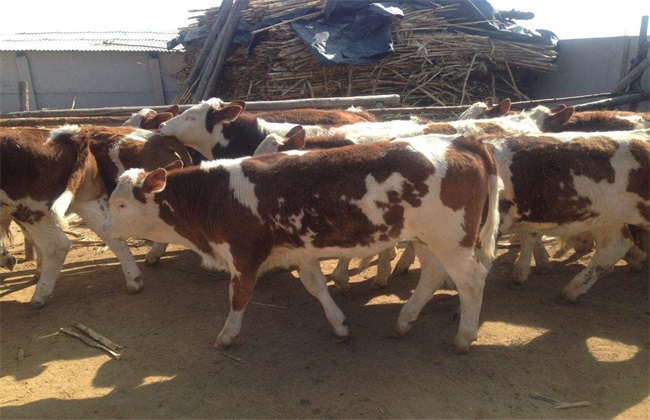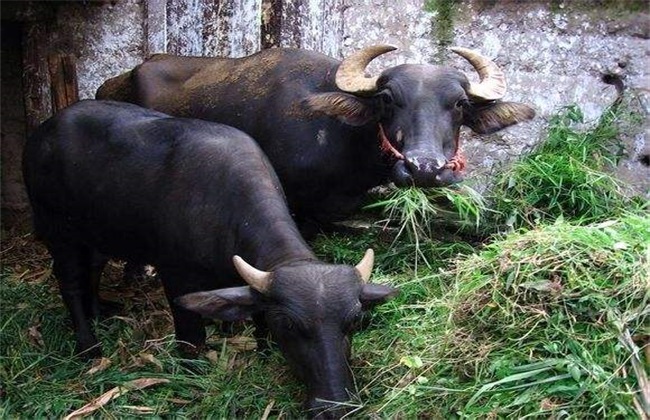Technical problems of Dairy Cow breeding
Dairy cows are the main milk-producing cows, and the main breeds of dairy cows are black and white dairy cows, which are cultivated after long-term breeding. Dairy cows are raised in many places in China, and the scale of farming is very large, but in some places there are some breeding problems, mistakenly thinking that some breeding methods are correct, but in fact there are some incorrect operations. let's take a look at these problems.

1. Add more salt to produce more milk
Some farmers add too much salt to the concentrate feed, artificially add more salt, cows can produce more milk, but animals have a standard for salt, can not eat too much salt, easy salt poisoning, increase the burden on the kidneys of dairy cows. And can not increase milk production, so feed salt must be within 0.7% to 0.8% standard, do not add randomly. There are special bricks for salt that can be placed to allow cows to lick freely.
2. Restrictions on eating grass
Cows generally eat more grass and graze more, so where there are pastures, the milk quality of dairy cows is also good. Concentrate only needs to be replenished in the right amount. Cows cannot be restricted from grazing. Cows generally eat grass and know that they will not really support themselves, so they can graze more and feed more grass even if they are not grazing.
3. Limit drinking water
Some people think that if the cow is fed too much water, the cow may have diarrhea, so it is fed regularly and quantitatively, but in fact, the cow ruminates need to secrete a lot of saliva, which comes from drinking water. So it's best to provide clean water where you can see it, drink freely, and don't limit it. Even if you encounter diarrhea, you have to let the cow drink water, because it will lose a lot of water.
4. Too much milking
The milk produced by the cow is nutritious, which comes from the cow itself, so don't have to be milked so that you can't get out. This will lead to excessive consumption of nutrients in the milk body, affecting milk production in the future, resulting in late postpartum estrus. Therefore, cows must be given appropriate long-term countermeasures for the dry period, not in too much of a hurry.
5. Do not trim the cow's hoof
In general, cattle hooves are easy to be ignored and can not be managed and maintained, but in fact, infection, redness and lameness will occur in the hoof parts of cows. It will also indirectly affect cow milk production, so it is best to repair the cow's hoof regularly, wash the cow's hoof, and wash the cow's hoof with 10% copper sulfate solution every week. Also pay attention to keep the floor of the barn and activity ground clean.
Cow farming management is prone to some details, these seem to be small problems, in fact, they all have a greater impact. So it's best to pay attention to improving these problems and don't continue to breed like this.
- Prev

How can beef cattle be fattened quickly? Key points of Rapid fattening techniques for Beef cattle
How can beef cattle be fattened quickly? Key points of Rapid fattening techniques for Beef cattle
- Next

How long does the breeding cycle of buffalo take?
How long does the breeding cycle of buffalo take?
Related
- On the eggshell is a badge full of pride. British Poultry Egg Market and Consumer observation
- British study: 72% of Britons are willing to buy native eggs raised by insects
- Guidelines for friendly egg production revised the increase of space in chicken sheds can not be forced to change feathers and lay eggs.
- Risk of delay in customs clearance Australia suspends lobster exports to China
- Pig semen-the Vector of virus Transmission (4)
- Pig semen-the Vector of virus Transmission (3)
- Five common causes of difficult control of classical swine fever in clinic and their countermeasures
- Foot-and-mouth disease is the most effective way to prevent it!
- PED is the number one killer of piglets and has to be guarded against in autumn and winter.
- What is "yellow fat pig"? Have you ever heard the pig collector talk about "yellow fat pig"?

